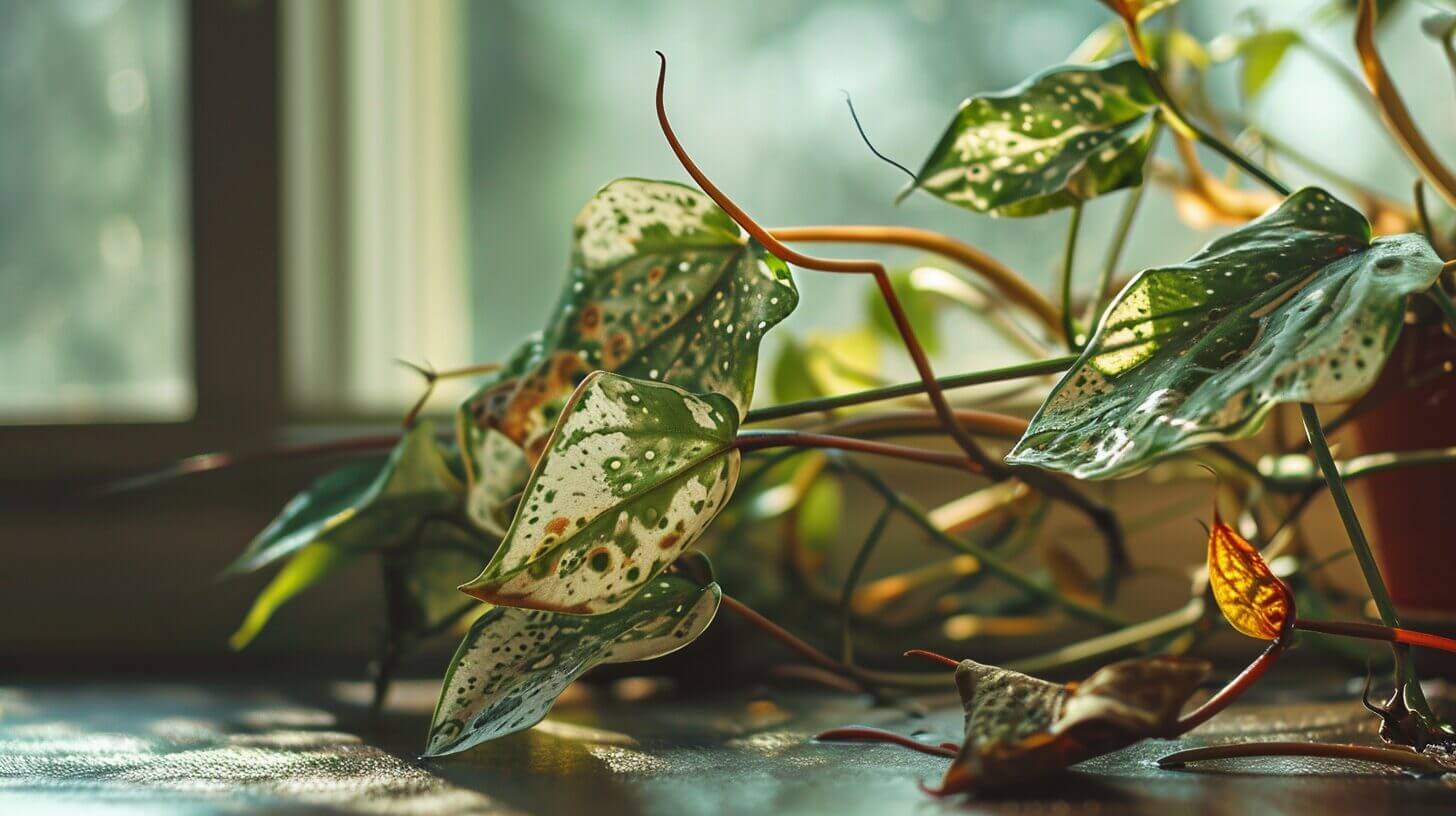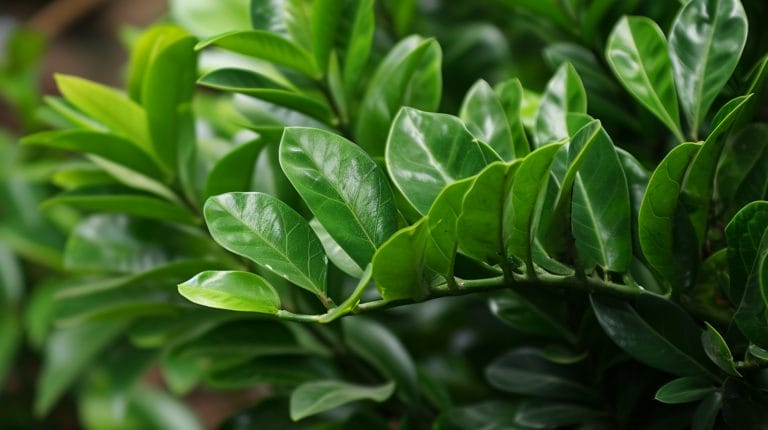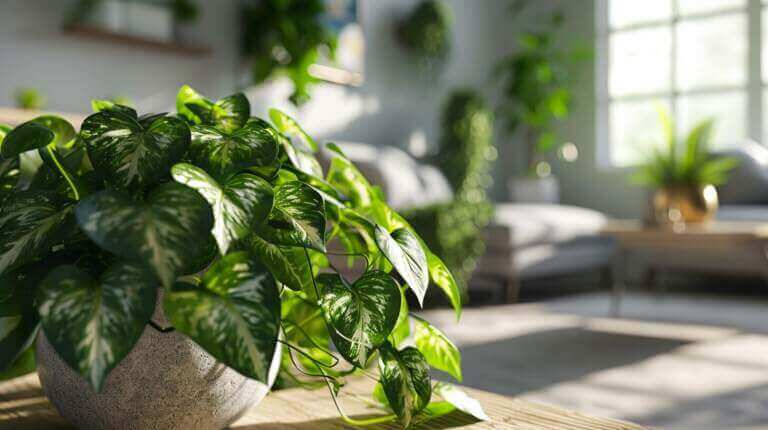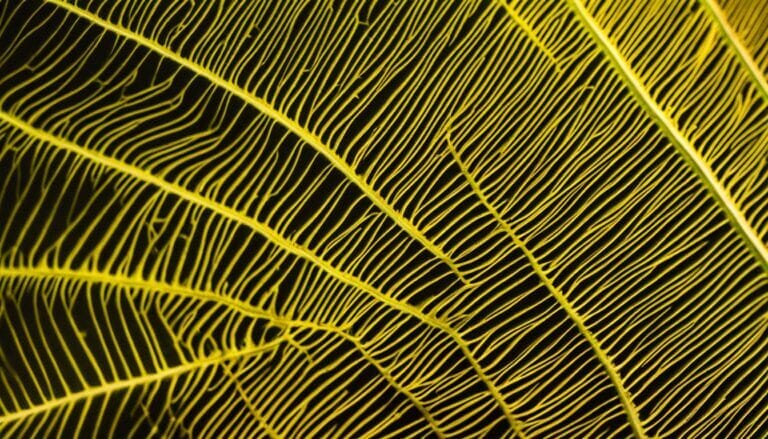How to Revive a Wilting or Drooping Polka Dot Plant
If you’re currently facing this issue with your polka dot plant wilting, don’t worry! A wilting or drooping polka dot plant can be caused by various common reasons, including underwatering, overwatering, extreme temperatures, humidity levels, water quality, repotting, sunlight, and fertilization. Understanding these factors and taking appropriate measures can help breathe new life into your precious plant.
Key Takeaways:
- Underwatering can cause dehydration and brown leaves. Providing adequate water and establishing a regular watering schedule is crucial to revive a wilting polka dot plant.
- Overwatering can lead to root suffocation and wilting. Ensure proper drainage and allow the soil to dry out between waterings.
- Extreme temperatures and low humidity can contribute to drooping. Keep your polka dot plant in an area with steady temperatures and sufficient humidity.
- Water quality and repotting can affect the health of your plant. Use distilled or rainwater and ensure proper drainage when repotting to prevent wilting.
- Provide bright, indirect light to your polka dot plant, as direct sunlight can cause shock and drooping. Maintain a regular fertilization schedule with appropriate dosages.
Polka Dot Plant Dying – Underwatering
Underwatering is a common cause of a wilting polka dot plant. When the plant doesn’t receive enough water, it can become dehydrated and its leaves may turn brown without yellowing first. Lack of moisture leads to wilted polka dot leaves and can be detrimental to the health of the plant. To revive an underwatered polka dot plant, it’s important to provide adequate water and establish a regular watering schedule.
Watering the soil to ensure sufficient drainage and prevent the plant from drying out is crucial. When watering, it’s best to water until the soil is evenly moist but not waterlogged. The frequency of watering will depend on various factors such as the size of the plant, the pot it’s in, and the environmental conditions. It’s important to monitor the soil moisture levels and adjust the watering accordingly.
Signs of Underwatering:
- Brown leaves without yellowing
- Wilting and drooping
- Dry soil
By addressing the issue of underwatering and providing sufficient moisture to the polka dot plant, it can be revived and regain its healthy appearance.
| Causes of Underwatering | Prevention and Remedies |
|---|---|
| Lack of watering | Establish a regular watering schedule and monitor soil moisture levels. |
| Improper drainage | Ensure the pot has proper drainage holes and use well-draining soil. |
| Environmental conditions | Adjust watering frequency based on temperature and humidity levels. |
| Size of the plant | Consider the size of the plant when determining the amount of water needed. |
Dying Polka Dot Plant – Overwatering
Overwatering is a common cause of a wilting polka dot plant. When the soil is oversaturated with too much water, it can lead to root suffocation and shock, resulting in wilted leaves. It is important to ensure proper drainage to prevent water from accumulating around the roots and causing damage. To revive an overwatered polka dot plant, it is crucial to allow the soil to dry out before watering again. Creating intervals between waterings helps prevent suffocation of the roots and promotes healthier root growth.
One way to improve drainage is by using well-draining soil and a pot with drainage holes. This allows excess water to escape, preventing waterlogging of the roots. It is also advisable to check the moisture level of the soil before watering. Inserting a finger or a moisture meter into the soil can help determine if it is dry enough to water your plant. If the top inch of soil feels dry, it is a good indication that the plant needs watering.
Table: Signs of Overwatering
| Signs | Description |
|---|---|
| Wilted leaves | The leaves may appear limp and droopy. |
| Yellowing leaves | The leaves may turn yellow, indicating nutrient deficiencies due to overwatering. |
| Root rot | Excess water can lead to root rot, characterized by a foul smell, dark and mushy roots. |
| Mold or fungus growth | Overwatering can create a damp environment, promoting the growth of mold or fungus on the soil surface. |
Polka Dot Plant Drooping – Extreme Temperatures and Humidity
Extreme temperatures and humidity levels can have a significant impact on the health of a polka dot plant. The plant thrives in temperatures between 70 and 80 degrees Fahrenheit, and exposure to temperatures that are too hot or too cold can cause wilting and drooping.
When the polka dot plant is subjected to hot conditions, it can go into shock, resulting in wilted leaves. On the other hand, low temperatures can also negatively affect the plant, causing it to wilt and struggle to thrive. To prevent these issues, it’s important to place the plant in an area with steady temperatures and avoid exposing it to extreme heat or cold.
Polka Dot Plant Is Dying – Water Quality and Repotting
Water quality can play a significant role in the health of a polka dot plant. Using hard tap water may introduce chemicals that can build up in the soil over time, potentially harming the plant and leading to wilting. To avoid this, it is recommended to use distilled or rainwater for watering your polka dot plant. These types of water are free from harmful chemicals and will help maintain the plant’s overall health.
Repotting can also cause temporary wilting in a polka dot plant. When repotting, the plant undergoes a transition period as it adjusts to its new environment. During this time, it is common for the plant to experience a temporary drooping or wilting of the leaves. To minimize the risk of transplant shock, it’s essential to use fresh soil and ensure proper drainage in the new pot. This will provide a healthy growing environment for the polka dot plant, reducing the chances of wilting.
Water Quality Tips:
- Use distilled or rainwater to avoid harmful chemicals from hard tap water.
- Avoid overwatering the plant, as excessive moisture can lead to root rot and wilting.
- Allow the soil to dry out between waterings to prevent waterlogging and ensure proper drainage.
- Consider using a water filtration system or letting tap water sit overnight to allow chlorine to dissipate before using it on your polka dot plant.
Repotting Tips:
- Choose a pot with drainage holes to prevent water from accumulating at the bottom.
- Use a well-draining potting mix that provides adequate air circulation for the plant’s roots.
- Gently loosen the roots when transplanting to encourage healthy growth.
- Allow the plant to adjust to its new pot by gradually increasing the amount of sunlight it receives.
Sunlight and Fertilizers
Proper sunlight exposure is crucial for the health and vitality of a polka dot plant. While it thrives in bright, indirect light, direct sunlight can cause the plant to go into shock and droop. To prevent wilting, it’s important to place the plant in an area with filtered or indirect sunlight. This can be achieved by positioning it near a window with a sheer curtain or by placing it in a well-lit room that doesn’t receive direct sunlight.
“Proper sunlight exposure is crucial for the health and vitality of a polka dot plant.”
When applying fertilizer, it’s best to dilute it in water and apply it to the plant’s soil. This ensures even distribution of nutrients and minimizes the risk of burning the plant’s roots. It’s important to note that different fertilizers have varying application frequencies, so it’s essential to read the instructions carefully.
| Pros of Indirect Sunlight | Cons of Direct Sunlight |
|---|---|
| Helps prevent wilting and shock | Can cause the plant to go into shock |
| Allows the plant to thrive in bright light conditions | Can lead to drooping and leaf damage |
| Creates a favorable environment for healthy growth | Can result in sunburn and discoloration |
Common Pests and Diseases
When it comes to polka dot plants, pests and diseases can be a common cause of wilting. These pesky invaders can wreak havoc on the plant’s health and vitality. Some of the most common pests include scale insects, mealybugs, aphids, and whiteflies. These tiny creatures can infest the plant, sucking out its sap and causing it to wilt. Regularly checking for signs of pest infestation, such as sticky residue or tiny insects, is crucial to maintaining the health of your polka dot plant. If you spot any pests, it’s important to take action immediately.
Diseases can also contribute to wilting in polka dot plants. One common disease is powdery mildew, which can manifest as a white, powdery coating on the leaves. This disease is often caused by overwatering or lack of ventilation. Another disease to watch out for is root rot, which occurs when the roots are consistently exposed to excessive moisture. To prevent these diseases, it’s important to provide proper care for your polka dot plant.
Preventing pests and diseases is key to reviving a wilting polka dot plant. Maintaining the right humidity levels, providing adequate light, and avoiding overwatering are crucial steps. Additionally, ensuring good air circulation, avoiding overcrowding, and checking your plant regularly for signs of trouble can help prevent pest infestations and diseases. By taking these precautions, you can keep your polka dot plant healthy and vibrant.
FAQ
How can I revive a wilting or drooping polka dot plant?
To revive a wilting or drooping polka dot plant, it’s important to identify the cause of the issue and address it accordingly. Factors such as underwatering, overwatering, extreme temperatures, humidity, water quality, repotting, sunlight, and fertilizers can contribute to the plant’s condition. Adequate watering, providing proper light conditions, and maintaining the right humidity levels are key to reviving a wilting or drooping polka dot plant.
What can cause a polka dot plant to wilt?
Polka dot plants can wilt due to various factors. Underwatering is a common cause, leading to dehydration and brown leaves. Overwatering can suffocate the roots and cause wilting. Extreme temperatures and low humidity can also contribute to the plant drooping. Additionally, water quality, repotting, sunlight exposure, and fertilizers can affect the plant’s health and lead to wilting.
How do I revive an underwatered polka dot plant?
To revive an underwatered polka dot plant, it’s important to provide adequate water and establish a regular watering schedule. Water the soil to ensure sufficient drainage and prevent the plant from drying out.
What should I do if my polka dot plant is overwatered?
If your polka dot plant is overwatered, ensure proper drainage and allow the soil to dry out before watering again. Creating intervals between waterings helps prevent suffocation of the roots and promotes healthier root growth.
How do extreme temperatures and humidity affect polka dot plants?
Extreme temperatures, especially excessively hot or cold conditions, can cause a polka dot plant to wilt and droop. The plant prefers temperatures between 70 and 80 degrees Fahrenheit. Low humidity can also dry out the plant and lead to wilting. It’s important to place the polka dot plant in an area with steady temperatures and sufficient humidity to prevent wilting.
Can water quality and repotting affect a polka dot plant’s health?
Yes, water quality can play a role in the health of a polka dot plant. Hard tap water may contain chemicals that can build up in the soil and harm the plant, leading to wilting. Using distilled or rainwater can prevent this issue. Additionally, repotting can cause temporary wilting as the plant adjusts to its new environment. It’s important to use fresh soil and ensure proper drainage when repotting to reduce the risk of transplant shock.
How does sunlight and fertilizers impact polka dot plants?
Direct sunlight can cause a polka dot plant to go into shock and droop. It’s important to provide bright, indirect light instead. The plant is a heavy feeder and may droop if it lacks nutrients or if it is overfertilized. Maintaining a regular fertilization schedule with appropriate dosages can help revive a wilting polka dot plant.
What pests and diseases should I be aware of when caring for a polka dot plant?
Polka dot plants can be susceptible to pests such as scale insects, mealybugs, aphids, and whiteflies. Regularly check for signs of infestation and treat with soapy water, rubbing alcohol, or neem oil. Diseases such as powdery mildew can also cause wilting, usually due to overwatering or lack of ventilation. Proper care, including regular watering, good lighting, and humidity control, can help prevent these issues and revive a wilting polka dot plant.







